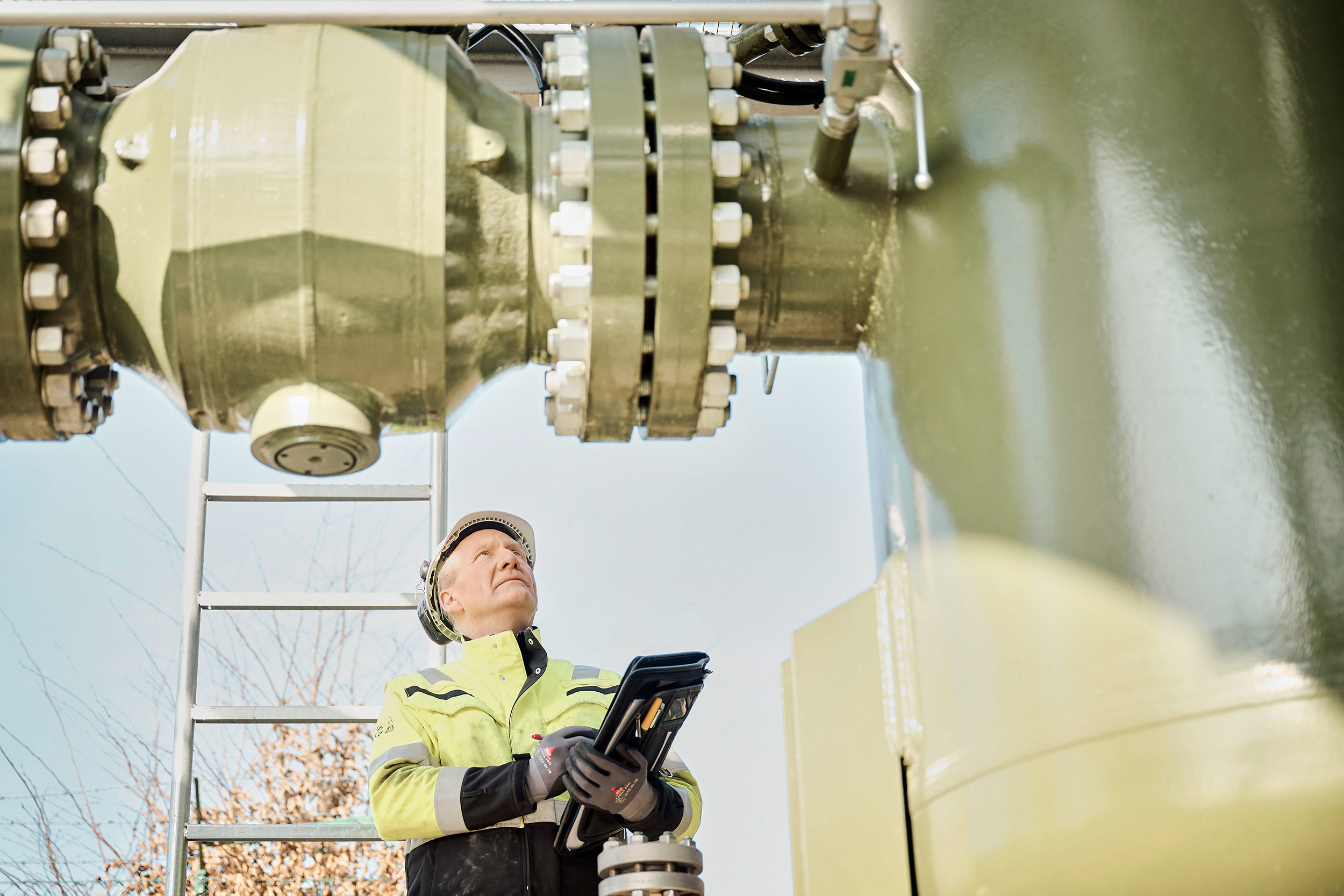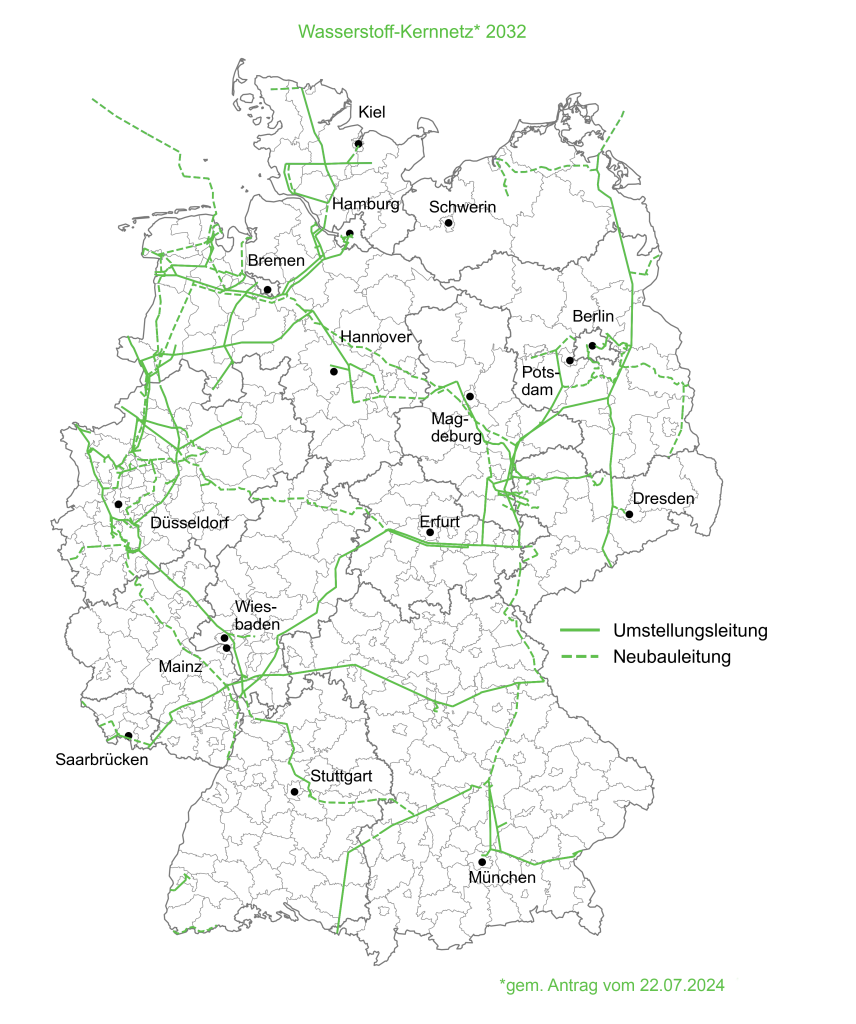
Project objectives
Connection with the potential import terminals in Wilhelmshaven and Bremerhaven
Medium-term transportation of Norwegian H2 imports
Connection with the planned electrolysis project in Emden
Connection of future H₂ storage facilities in the region
Covering the demand of (industrial) customers along the route and in the downstream distribution grid
Potential integration of additional H₂ production capacities along the route and in the region
Project information
Commissioning of the first pipelines
The pipeline with a nominal diameter of DN 600 (60 cm pipe diameter) offers high flow capacities
The H2 network is 239 km long. 62% of it consists of existing pipelines that are being converted to transport hydrogen.
The costs for the line will amount up to 250 million euros. By utilizing existing infrastructure, the costs are significantly lower than for a completely new construction.
FAQ
Hydrogen is an essential component of the energy transition in Germany and indispensable for the decarbonization of the industry. It can be produced in a climate-friendly way and transported safely and cost-effectively. There are many possible applications for customers. Particularly in sectors that cannot be directly electrified, dependence on fossil fuels can be reduced. Hydrogen thus creates a low-emission alternative to the use of natural gas and coal. At the same time, hydrogen, unlike electrical energy, can be stored in large quantities and therefore contribute to security of supply by bridging lulls in energy generation from wind and sun.
The hydrogen is transported in liquefied form via ships, regasified, for example in Wilhelmshaven, and fed into the pipeline.
In addition, H₂Coastlink will also receive hydrogen from Norway perspectively. An import terminal is planned in Wilhelmshaven for this purpose.
The use of hydrogen offers great potential for reducing CO₂ emissions, particularly in the industrial sector. It is versatile, easy to transport and – unlike electricity – can be stored in large quantities. In addition, existing infrastructure can continue to be used, which significantly reduces costs and duration compared to new construction.
The applications for hydrogen are as diverse as the element itself. As part of sector coupling, various branches of the economy benefit from the green energy carrier. The main areas of application are
Industry
The industrial sector is the most important area of application for green hydrogen and offers the greatest emission savings. Large parts of the industry, such as steel production, glass production or ammonia production, are still dependent on fossil fuels such as coal or natural gas. Green hydrogen can replace fossil fuels here and enables major emission savings.
Conversion to electricity
Renewable energy sources are subject to seasonal fluctuations, so that at certain times more electricity is generated than can be used, while at other times too little electricity is available. Surplus electricity can be converted into hydrogen by electrolysis and stored. If more electricity is required, the hydrogen can be used for generating electricity.
Other areas of application
Hydrogen is also used in mobility (e.g. in fuel cell vehicles) and in the heating market (e.g. in hydrogen heating systems).
It is a long way from the hydrogen production sites in northern Germany and the North Sea to industrial consumers in the south. Large quantities of hydrogen have to be transported over several thousand kilometers to meet future demands. Transporting hydrogen via pipelines is the most efficient and cost effective option. As existing natural gas pipelines can easily be converted for hydrogen transportation, large-scale construction measures can be avoided, as well as high construction costs for new pipelines. In addition, existing storage facilities along the pipeline network offer the possibility of temporarily storing hydrogen over a short distance and feeding it into the grid when required. This guarantees security of supply not only for industrial customers, but also for the electricity market by compensating for so called dark dips in renewable power generation.
Yes, hydrogen has been produced, transported and used in Germany for a long time. The production of hydrogen using electrolysis technology follows proven rules and techniques and is safe.
The national hydrogen grid was adopted in November 2023. It can be downloaded here.
Contact
Do you have any questions about the H₂Coastlink project or our hydrogen services?
Please contact us!




